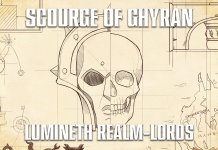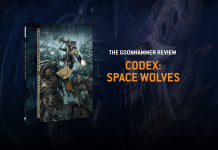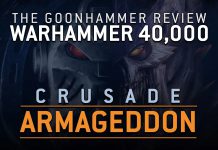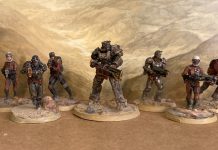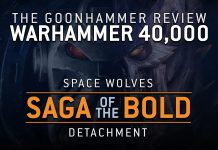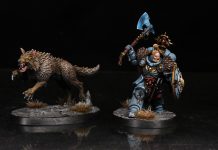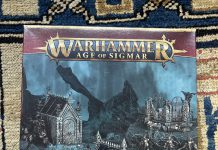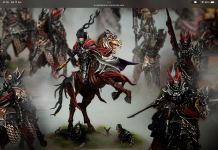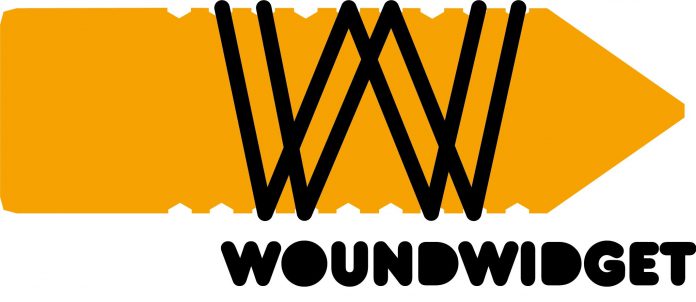I have a terrible habit that you might share too – using easily confused dice to count wounds, objective scores, cannon shots left in the caisson, shock, all the bookkeeping and number-counting that happens on the miniature battlefield. It’s easy to do, but then you run into problems – are the right dice associated with the right model? Were you counting up or counting down? That dice you just picked up to roll – wasn’t that the dice tracking your Land Raider hull points? How many hull points does it have, anyway? I was playing Horus Heresy at my local club when my opponent offered the use of their tracking system for all this stuff – the Woundwidget set by Googly Eyed Skull, and so here’s the review!
Thanks to Googly Eyed Skull for the materials for this review
I got sent the WoundWidget Battleset, a massive collection of cut and coloured semitransparent markers for tracking statuses, counting wounds or hull points (or anything else that needs counting), two larger trackers for Objective scores and Command Points, a measuring tool marked for 1,2,3 and 6 inches and an array of indicators and tokens for miscellaneous marking. Everything was crisply cut, measured up perfectly where distances are marked and generally of a really high quality, backed with protective film to keep it all pristine until its time for battle. There’s enough give to the plastic to mean stuffing it in your hobby bag with your dice and other non-miniature bits is totally fine, more than strong enough to stand up to the rigours of gaming and transport alike.
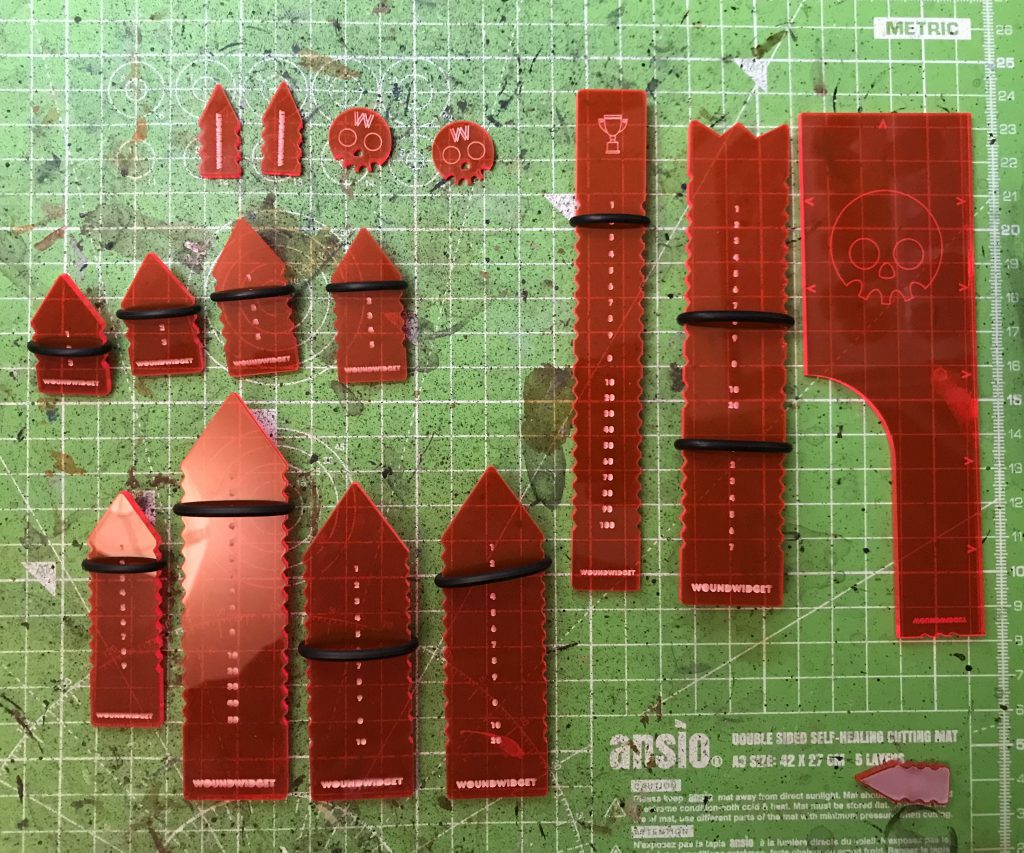
Using the WoundWidgets
The counting markers are definitely the big sell – there’s a lot of systems out there, but this might be the simplest, clearest and most effective. Each Widget is clearly marked out with scales from 1-3 for the smallest and 1-10 with 20, 30, 40 and 50 for the largest. You mark out wounds/shots/hull points remaining with an o-ring that sits snugly into the grooves on the Widget. The fit is tight enough that it won’t be moved accidentally, but loose enough that it isn’t difficult to move the ring around when needed. You’re absolutely not going to be accidentally adjusting totals up or down while moving these around the field, and there’s nothing to spin, roll or drop that will interfere with accurately recording.

The Widgets are cut to a point, allowing you to clearly indicate which model is associated with each counter. This is a fairly subtle difference, but having seen many wound markers they’re not always clear as to who they’re associated with. The point also serves to answer the big question – do you count up or count down? You could use these either way, but counting down is best, starting from the top and then, when no wounds remain, the o-ring comes off the bottom and the model is removed. Simple!
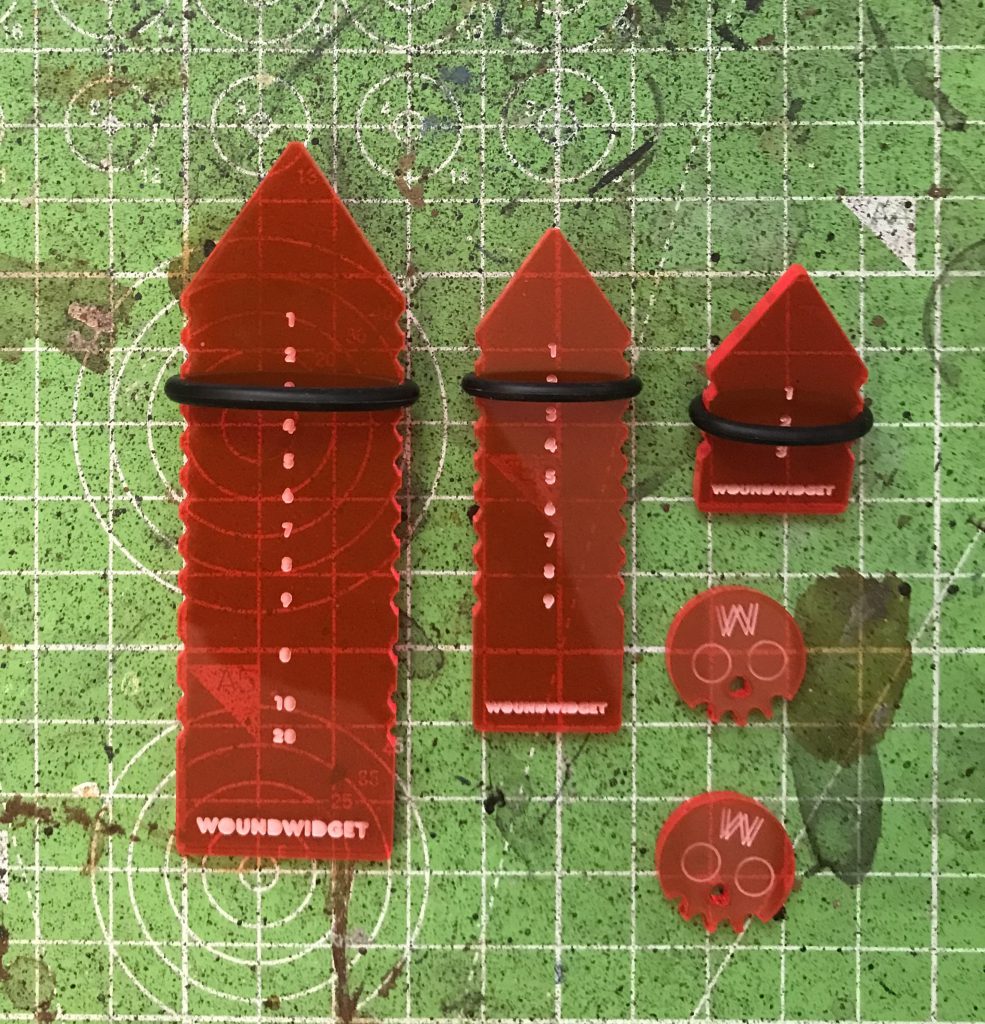
While the Widgets are the star of the set, the markers and indicators that come with the Battle Set are also of a high quality and prove dead useful on the battlefield. I really like the skulls, who end up being used for pinning (the bane of Heresy) or to indicate dead models on my multibases (the bane of Sharp Practice), but there are a million uses here and that’s helped by the clarity and crispness of the cut plastic because they’re just pretty delightful generally.
Visibility
A big sell for me of a wound tracking kit is their visibility on the battlefield, and it’s another place where these triumph over the dice approach. The set I received is bright orange (eight colours available in total), and clearly visible against a wide variety of backgrounds. You’re not going to mistake these for thrown dice, and both you and your opponent are able to take in the battlefield situation at a glance. That’s handy to know – tucked away dice showing wounds remaining (or is it wounds taken?) where you can’t see them can play with your visual processing and makes decision making harder. Nice, highly visible and distinctively coloured Woundwidgets are going to make those decisions easier to make. You might be able to hold the state of the field in your brain like Guilliman or, indeed, Napoleon, but I can’t and so these are very helpful.
They’re also prominent and obvious enough that if you want to sweep them all off the battlefield for a glamour shot, you’ll definitely not miss one – many a carefully posed photo has been ruined by an errant wound-tracking dice. They’d work well off the battlefield too, on unit cards or index cards to track lost wounds or once-a-battle abilities.
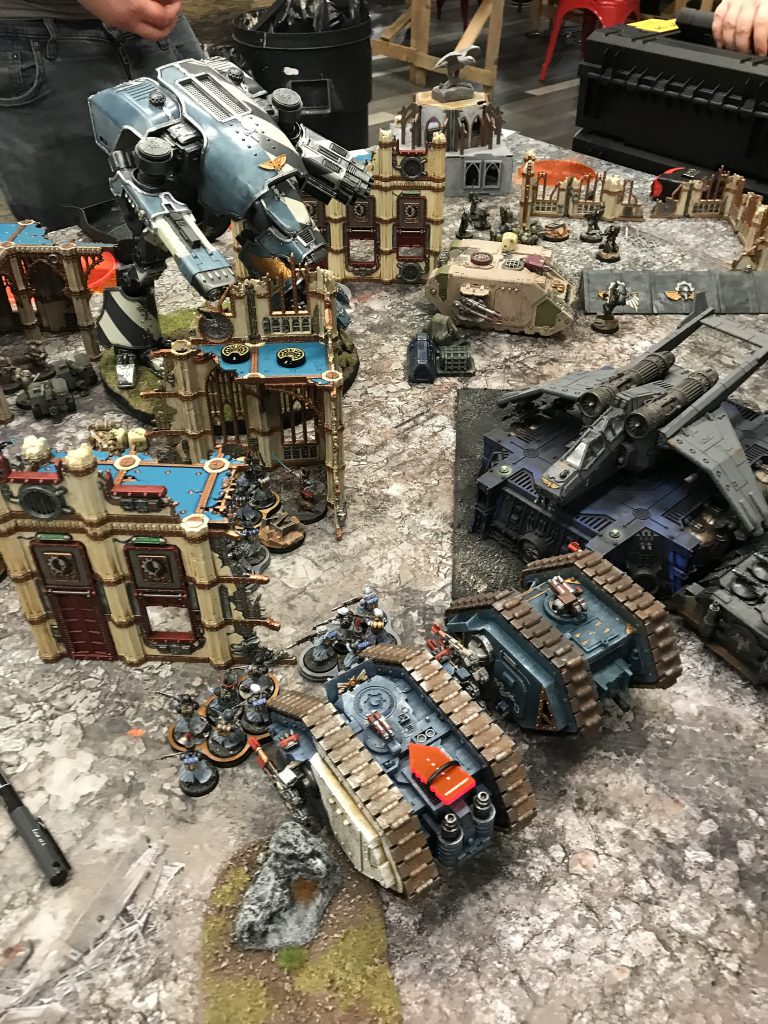
If there’s one thing I didn’t like so much about the set, it’s that once I’d washed off some of the dust from the production process, some of the numbers became a little hard to read for someone like me with poor long-distance vision. I occasionally game without my reading glasses on (terror for the opponent there), and with the numbers showing up as orange on orange, the rounder figures became harder to read at a distance. However, the black o-rings are prominent and clear against the coloured plastic and the relative position of the o-ring gives a great guide to what’s left on a model, so you can always tell if something is near to death (or perfectly fine). This is a minor gripe, and could have been easily solved by either not rinsing everything before use, or leaving the backing tape on. Alternatively, I could stop trying to play games without my glasses on, because it reduces the entire table to a formless blob anyway.
Conclusion
If you’d like a good solid set of markers for your battlefield and you really want to do away with fiddly trackers or easily-confused dice, this is a solid recommend. The Widgets and O-Ring system is a great idea that works simply and incredibly well, and it’s a bit of a wonder to me that noone had done it before! For accurate recording, ease of use and visual clarity, these are a great option at a great price and overall well worth checking out.
Questions, comments, suggestions? contact@goonhammer.com or leave a comment below

